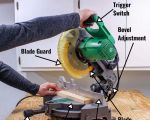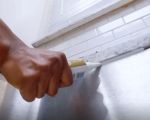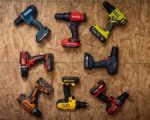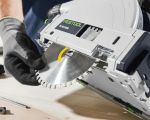How to Measure for Accurate Cuts with a Tape Measure: Essential Tips for Precision
When it comes to any project that requires precise measurements, such as DIY home improvements or professional carpentry, using a tape measure accurately is crucial for achieving the best results. Whether you're cutting wood, fabric, or even drywall, the difference between an accurate and inaccurate cut can make or break your work. This article will walk you through the best practices for measuring for accurate cuts with a tape measure, so you can avoid mistakes and ensure your projects are completed with precision.
1. Why Accuracy Matters in Measurement
Before diving into how to use a tape measure for accurate cuts, it’s important to understand why accuracy is so essential. Even small measurement errors can lead to misalignment, gaps, or ill-fitting pieces, which can ruin a project and waste time, materials, and effort. Whether you’re building furniture, hanging shelves, or installing baseboards, precise measurements ensure that all the parts of your project fit together seamlessly, helping you create professional-quality results.
Taking the time to get accurate measurements also minimizes the need for corrections or rework later on. By mastering the art of measuring with a tape measure, you can save yourself from frustration and costly mistakes.
2. Choosing the Right Tape Measure for Precision
The first step to accurate measuring is selecting the right tape measure. Not all tape measures are created equal, and using a high-quality, precise tape measure is key for ensuring your cuts are accurate. Here are a few factors to consider when choosing a tape measure:
- Measurement Range: Depending on the size of your project, make sure the tape measure can extend far enough to reach the measurements you need. A 25-foot tape measure is sufficient for most home projects, but you may need something longer for larger tasks.
- Blade Width: A wider blade can provide more stability, especially for longer measurements. Thicker blades are less likely to bend and will stay straighter when measuring long distances.
- Markings: Ensure the tape measure has clear, easy-to-read markings. Look for a tape measure that includes both metric and imperial measurements for flexibility.
For an even more precise measuring experience, consider using a digital tape measure, which can eliminate human error and provide instant measurements with a high level of accuracy.
3. Proper Tape Measure Technique for Accuracy
Knowing how to properly handle and use a tape measure is just as important as selecting the right one. Here are a few tips to help you measure for accurate cuts:
- Hold the Tape Measure Straight: When measuring, ensure the tape is pulled tight and straight, not sagging. If the tape is crooked, it can cause inaccurate readings and lead to poor cuts.
- Use the Right Side of the Tape: Most tape measures have both inside and outside edges, but only one of them is calibrated for accuracy. Be sure to use the correct edge to ensure precise measurements.
- Check the Zero Mark: When measuring, always check that the “zero” end of the tape measure is flush with the surface or object you’re measuring from. Any deviation here can cause errors in the final measurement.
- Make Multiple Measurements: For extra accuracy, take several measurements and double-check them. This is especially important when cutting longer pieces where even a slight error can be magnified.
By following these simple tips, you can ensure that your tape measure readings are accurate, which is the first step toward making precise cuts.
4. Understanding Measuring Units and Conversions
Accuracy also depends on your understanding of measuring units. Most tape measures feature both imperial (inches and feet) and metric (centimeters and meters) measurements. For some projects, you may need to convert between the two, so it’s helpful to be comfortable with both systems. Here are some useful tips for working with different units:
- Imperial Measurements: Inches are commonly used in the United States for woodworking and home projects. Be sure to read the tape measure correctly by understanding fractions, such as 1/4", 1/8", and 1/16". For precise cuts, always measure to the smallest possible fraction.
- Metric Measurements: The metric system is used globally and is typically used in scientific, engineering, and some home improvement projects. Understanding how to convert between millimeters and centimeters can help ensure accuracy.
- Use a Conversion Chart: If you need to switch between systems, keep a conversion chart handy to make the process faster and easier. Familiarizing yourself with the basic conversions will save you time during your project.
Knowing how to navigate between different measuring systems ensures your cuts will be accurate, no matter the unit of measurement you choose to use.
5. How to Make Accurate Cuts After Measuring
Once you’ve measured correctly, the next step is to make the actual cut. However, even with an accurate measurement, the way you cut can impact the final result. Here are some tips to ensure that your cuts are as precise as your measurements:
- Use the Right Tools: Make sure your cutting tools, whether it’s a saw, scissors, or utility knife, are sharp and in good condition. Dull tools can lead to uneven edges and poor cuts.
- Secure Your Material: Before cutting, secure the material firmly in place. Use clamps or a cutting guide to prevent it from shifting during the cut. This will help prevent mistakes caused by movement.
- Measure and Mark Before Cutting: Always mark your measurements with a pencil or chalk before cutting. This gives you a visual reference and ensures you stay on track as you cut.
By following these steps, you can make sure that your cuts are as precise as the measurements you’ve taken, helping you achieve professional-level results.
6. Conclusion: Perfecting Your Measurements for Perfect Cuts
Accurate measurements are the foundation of every successful project. Whether you’re a beginner or a seasoned professional, learning how to properly measure and use a tape measure is essential for making precise cuts. By choosing the right tape measure, using the proper technique, and understanding measuring units, you can take the guesswork out of cutting and ensure that your projects turn out exactly as planned.
Want to take your projects to the next level? Explore a wide range of high-quality measuring tools and more at ToolNest, your go-to destination for top-notch products to help you achieve perfection in every cut.
<> SEO Title: How to Measure for Accurate Cuts with a Tape Measure – Tips for Precision SEO Keywords: accurate cuts, tape measure, measuring for cuts, DIY projects, measurement techniques SEO Description: Learn how to measure for accurate cuts with a tape measure. Follow these expert tips to ensure precision and success in your DIY projects.








